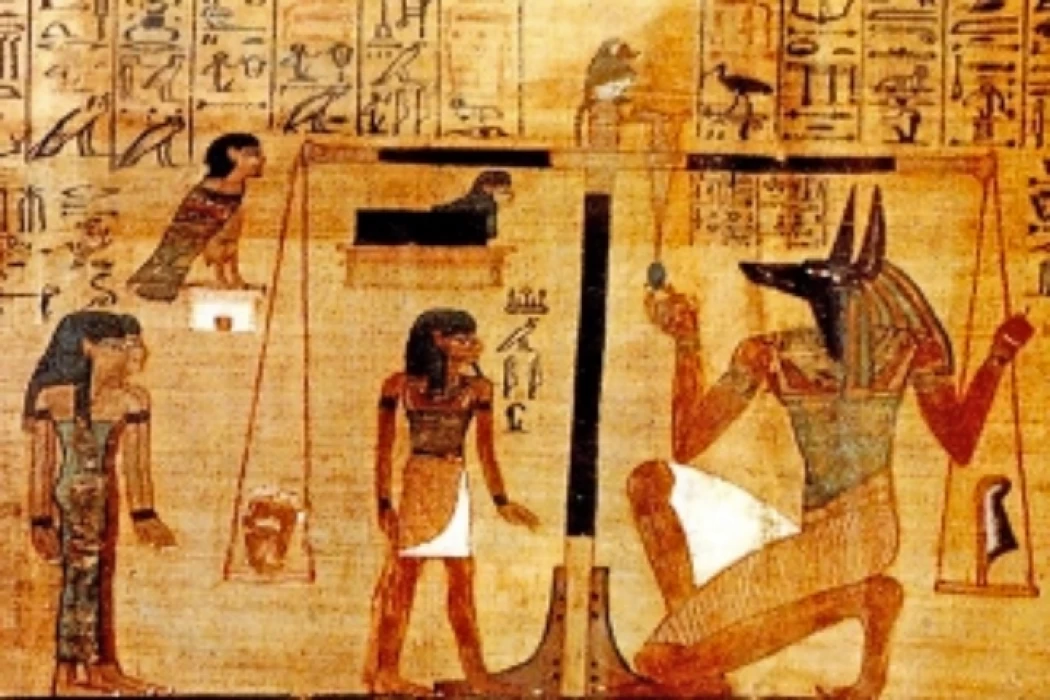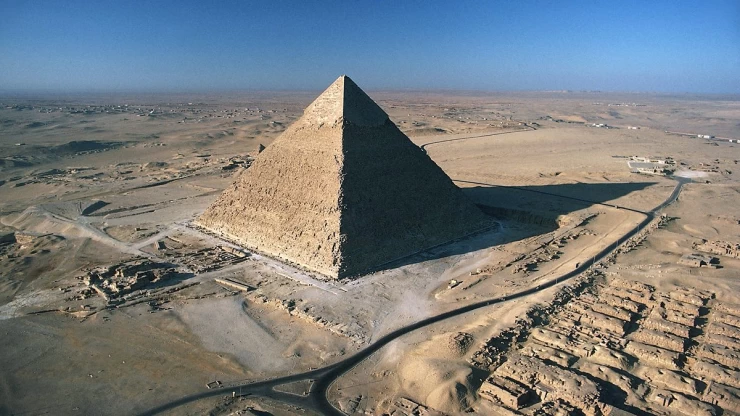
Meskhenet, Göttin der Geburt
Im alten Ägypten brachten die Frauen ihre Kinder im Schneidersitz auf einem Paar Ziegelsteinen zur Welt, die als Geburtssteine bekannt waren, und Meskhent war die Göttin, die mit dieser Form der Geburt verbunden war.
Daher wurde sie in der Kunst manchmal als Ziegelstein mit einem Frauenkopf und einer Kuhgebärmutter darauf dargestellt. Zu anderen Zeiten wurde sie als Frau mit einem symbolischen Kuhschoß auf ihrem Kopfschmuck dargestellt. Da sie für die Erschaffung von Ka verantwortlich war, wurde sie mit dem Schicksal in Verbindung gebracht.
Daher wurde sie manchmal mit Shai in Verbindung gebracht, der zum Gott des Schicksals wurde, nachdem sich die Gottheit aus einem abstrakten Konzept entwickelt hatte. Meskhent spielt eine wichtige Rolle in den Volkserzählungen der Papyrusfragmente. Sie erzählt von der Geburt der Könige Oser Kaf, Sahure und Neferir Kare Kakai, den ersten drei Königen der Fünften Dynastie, von denen es heißt, sie seien Drillinge.
Unmittelbar nach der Geburt eines jeden Kindes erschien Meskhenet und sagte voraus, dass es König von Ägypten werden würde.
Es wird auch angenommen, dass Meskhenet die erste Ehefrau ist. Andjiti, der Gott der Geburten in der Unterwelt. Andjety scheint seit dem vordynastischen Andjet verehrt worden zu sein, und die meisten Ägyptologen glauben, dass er der Gott ist, der schließlich zu Osiris wurde.
Who is Meskhenet the Egyptian goddess of childbirth?
In ancient Egypt, women gave birth to children while sitting cross-legged on a pair of bricks, known as birth bricks, and Meskhent was the goddess associated with this form of childbirth.
And therefore, in art, she was sometimes depicted as a brick with a woman's head, and on it a cow's uterus. Let's go on a unique Egypt tours to discover the lifestyle of people in ancient Egypt. At other times she was depicted as a woman with a symbolic cow's womb on her headdress.
Since it was responsible for the creation of Ka, it was associated with fate.
Thus, she was sometimes said to be associated with Shai, who became the god of fate after the deity evolved from an abstract concept. I advise you to check our Egypt day tours to Luxor, because this city is full of many secrets about Egyptian pharaohs and their symbols and mythology. You can take the Luxor west bank day tour, you will visit many amazing places such as Karnak temple, Valley of the kings and more.
She was sometimes depicted as a brick with a woman's head, and on it a cow's uterus. Let's go on a unique Egypt tours to discover the lifestyle of people in ancient Egypt. At other times she was depicted as a woman with a symbolic cow's.
Egyptian goddess Meskhenet
Meskhent features prominently in folk tales in papyrus fragments that you will discover during Egypt travel packages. It tells about the birth of each of the kings Oser Kaf, Sahure, and Neferir Kare Kakai, the first three kings of the Fifth Dynasty, who in the story are told that they are triplets.
Immediately after the birth of each child, Meskhenet appeared and predicted that he would become king of Egypt. Do not miss to book our Egypt luxury tours to gain more knowledge about secrets kings in ancient Egypt.
It is also believed that Meskhenet is the first wife. Andjiti, the god of childbirth in the underworld. Andjety appears to have been worshiped since the pre-dynastic Andjet, and most Egyptologists believe him to be the god who eventually became Osiris.
It is also believed that Meskhenet is the first wife. Andjiti, the god of childbirth in the underworld. Andjety appears to have been worshiped since the pre-dynastic Andjet, and most Egyptologists believe him to be the god who eventually became Osiris.
The birth chair was custom-made to fit the wife's body and weight. Its quality and design reflected social status and financial ability. Before the delivery date, the husband would walk around the house in the chair, including in front of it, and then place it in front of the door so the neighbors would know they were expecting a baby...The concept of the "birth chair" dates back to the Pharaonic era, when it was made of stone without a back. Later, it evolved to include a back and armrests.
The goddess Meskhent was responsible for determining the fate of newborns, as she protected the birth seat.















